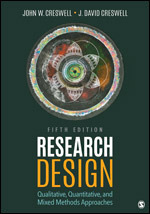The Habit of Writing

Establish the discipline or habit of writing in a regular and continuous way on your proposal. Although setting aside a completed draft of the proposal for a time may provide some perspective to review your work before final polishing. A start-and-stop process of writing often disrupts the flow of work. It may turn a well-meaning researcher into what I call a “weekend writer,” an individual who has time for working on research only on weekends after all the important work of the week has been accomplished. Continual work on the proposal is writing something each day or at least being engaged daily in the processes of thinking, collecting information, and reviewing that goes into manuscript and proposal production. We do feel that some people have a stronger urge to write than others. Perhaps this comes from a need to express oneself or a comfort level with self-expression or simply with training. Select a time of day to work that is best for you, and then discipline yourself to write at this time each day. Choose a place free of distractions. Boice (1990, pp. 77–78) offered ideas about establishing good writing habits:
With the aid of the priority principle, make writing a daily activity, regardless of mood, regardless of readiness to write.
If you feel you do not have time for regular writing, begin by charting your daily activities for a week or two in half-hour blocks. It is likely you’ll find a time to write.
Write while you are fresh.
Avoid writing in binges.
Write in small, regular amounts.
Schedule writing tasks so that you plan to work on specific, manageable units of writing in each session.
Keep daily charts. Graph at least three things: (a) time spent writing, (b) page equivalents finished, and (c) percentage of planned task completed.
Plan beyond daily goals.
Share your writing with supportive, constructive friends until you feel ready to go public.
Try to work on two or three writing projects concurrently so that you do not become overloaded with any one project.
It is also important to acknowledge that writing moves along slowly and that a writer must ease into the process. Like the runner who stretches before a road race, the writer needs warm-up exercises for both the mind and the fingers. We are reminded of the piano player who engages in finger stretching exercises before practicing a difficult piece that will put the hands into difficult positions. For your research, some leisurely writing activity, such as writing a letter to a friend, brainstorming on the computer, reading some good writing, or studying a favorite poem, can make the actual task of writing easier. We am reminded of John Steinbeck’s (1969) “warm-up period” (p. 42) described in detail in Journal of a Novel: The East of Eden Letters. Steinbeck began each writing day by writing a letter to his editor and close friend, Pascal Covici, in a large notebook supplied by Covici.Other exercises may prove useful as warm-ups. Carroll (1990) provided examples of exercises to improve a writer’s control over descriptive and emotive passages:
Describe an object by its parts and dimensions, without first telling the reader its name.
Write a conversation between two people on any dramatic or intriguing subject.
Write a set of directions for a complicated task.
Take a subject and write about it three different ways. (pp. 113–116)
This last exercise seems appropriate for qualitative researchers who analyze their data for multiple codes and themes (see Chapter 9 for qualitative data analysis).Consider also the writing implements and the physical location that aid the process of disciplined writing. The implements—an on-line dictionary and thesaurus, a tablet for jotting down thoughts, a cup of coffee, and a handful of Triscuits (Wolcott, 2009)—offer the writer options for ways to be comfortable when writing. The physical setting can also help. Annie Dillard (1989), the Pulitzer Prize–winning novelist, avoided appealing workplaces:[su_quote style="default" cite="" url="" class=""]One wants a room with no view, so imagination can meet memory in the dark. When I furnished this study seven years ago, I pushed the long desk against a blank wall, so I could not see from either window. Once, fifteen years ago, I wrote in a cinder-block cell over a parking lot. It overlooked a tar-and-gravel roof. This pine shed under trees is not quite so good as the cinder-block study was, but it will do. (pp. 26–27)
This material is drawn from the SAGE Publishing text Research Design by John W. Creswell, professor of family medicine and co-director of the Michigan Mixed Methods Research and Scholarship Program at the University of Michigan, & J. David Creswell from Carnegie Mellon University. This best-selling text pioneered the comparison of qualitative, quantitative, and mixed methods research design and and reflects about the importance of writing and ethics in scholarly inquiry. The
